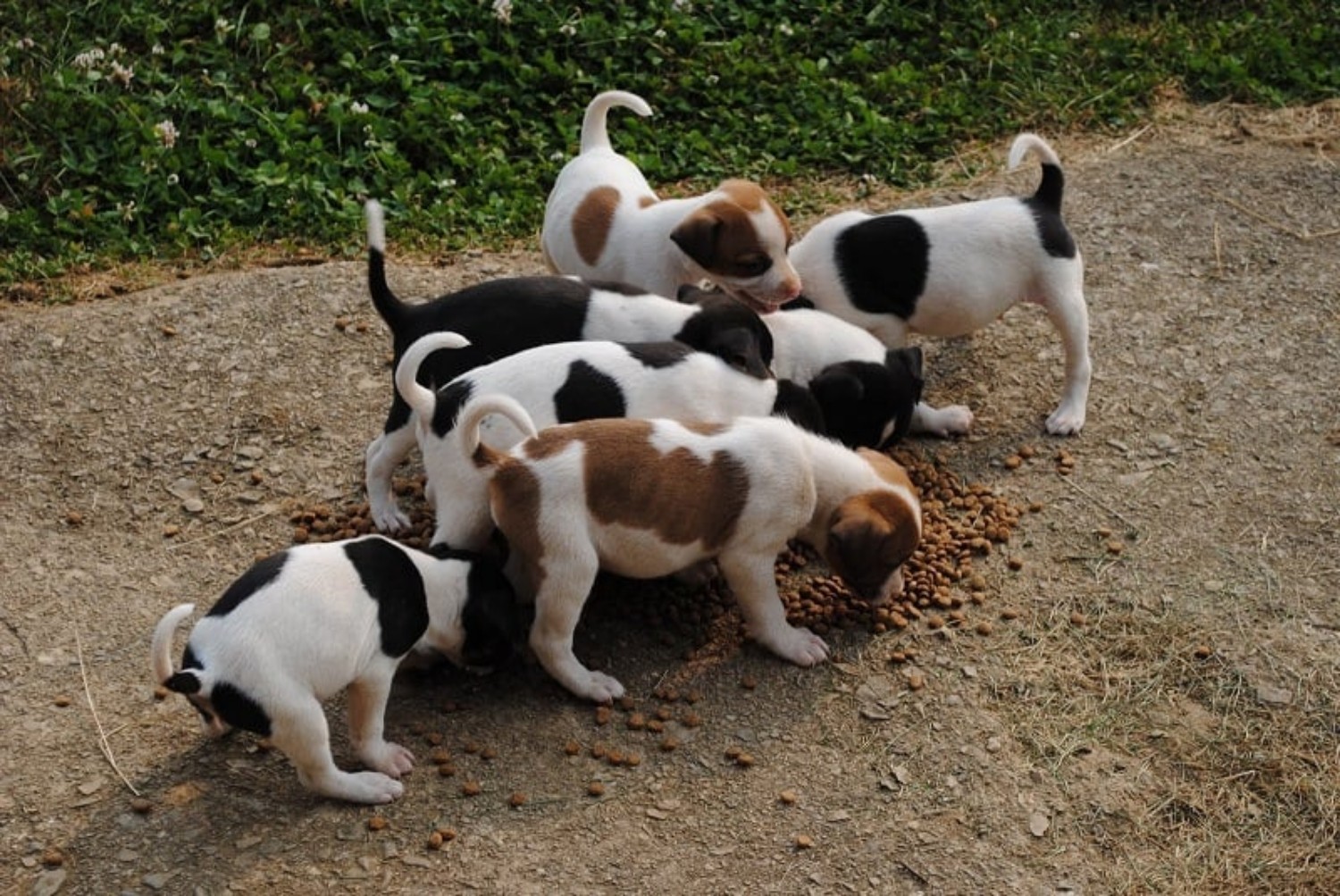
Their affectionate and calm temperament along with small size has made them popular as service dogs in hospice, treatment for depression, in Assisted Living, and other human-care jobs. In the current times, the Rat Terrier is becoming popular not only as a family pet but as a working dog in several fields. In contrast, the Rat Terrier has benefited from a long history of refinement with regular outcrosses to bring in useful qualities and genetic variability. Most modern breeds were developed from a few founding dogs and then propagated from a closed gene pool. The genetic diversity of the Rat Terrier has contributed to the overall health, keen intelligence, and soundness of the breed. Breed loyalists maintained the bloodline, leading to the modern Rat Terrier. However, the widespread use of chemical pesticides and the growth of commercial farming led to a sharp decline in the breed from the 1950s onwards. Rat Terriers were cherished as loyal hunting companions and efficient killers of vermin on 20th-century American farms: as a result, they were one of the most popular dog types from the 1920s to the 1940s.
FEIST DOG BREED RESCUE REGISTRATION
The smaller varieties diverged from the Rat Terrier line very early on, with UKC registration for the Toy Fox Terrier beginning in 1936. Many of the foundation Rat Terriers were indistinguishable from small mixed-breed hunting dogs known as " feists". After the 1890s, as the breed type became popular in the United States, they were bred with beagles, Italian Greyhounds, and Manchester Terriers. Their speed is used for controlling vermin and hunting small game such as squirrels and hares. However, they were, for the most part, bred for speed. The breed name comes from the occupation of its earliest ancestors brought to the US by working-class British migrants as the dogs were used in rat-baiting. Hatch is thought to have been a mongrel, and was brought on board to control the rat population. The earliest-known record of a rat-catching dog is that of "Hatch", whose remains were recovered from the Mary Rose, the flagship of Henry VIII, sunk in 1545 and re-raised in 1982. The average lifespan of a well-bred Rat Terrier is 16–19 years. The Canine Health Information Center (CHIC) recommends that Rat Terriers be tested for patellar luxation, cardiac abnormalities, pancreatic issues, hip dysplasia, and Legg–Calvé–Perthes syndrome. However, with its growth in popularity in recent years some issues are becoming more common. However, merle is widely considered to be the result of recent outcrosses and, because of associated health problems, is rejected by most Rat Terrier breeders.ĭue to regular outcrossings throughout the Rat Terrier's history, overall it is a very hardy breed. Brindle, currently disallowed by the main breed standards, is considered by some to be a traditional Rat Terrier pattern, and there is a growing movement to have this pattern accepted into the breed.

Ticking is usually visible in the white parts of the coat, or in the underlying skin. Creeping tan (often "Calico"), is also acceptable. They may be tricolor or bicolor, always with some amount of white present. The classic coloring is black tan point with piebald spotting (known as black tricolor), but chocolate, tan (varying in shade from pale gold to dark mahogany), blue, isabella (pearl), lemon, and apricot are all fairly common. The Rat Terrier comes in a variety of coat colors. After a period of development this line resulted in the American Hairless Terrier, recognized as a separate breed by several registries. In the 1970s, a hairless mutation appeared in a single Rat Terrier and was propagated into a strain of the Rat Terrier. The NRTA continues to classify the Teddy Roosevelt Terrier as the Type B Rat Terrier. The NRTA recognizes a Toy variety weighing 10 pounds (4.5 kg) or less. UKC and AKC do not recognize the Decker strain as another breed they are merely considered a standard variety. Called the Decker or Decker Giant, it was named after breeder Milton Decker who created a larger hunting companion and are recognized by the National Rat Terrier Association (NRTA, see "Breed recognition" below).

A larger strain, often in excess of 25 pounds (11 kg), has been developed. The standard says "small to medium" and the miniature is small enough to go in and under those places where vermin like to hide. The miniature size-13 inches (33 cm) and under as defined by the UKC-has become more popular as a house pet and companion dog, but the miniature is still a hunting dog. The Rat Terrier ranges from about 10 to 25 pounds (4.5 to 11.3 kg) and stands 10 to 18 inches (25 to 46 cm) at the shoulder.


 0 kommentar(er)
0 kommentar(er)
